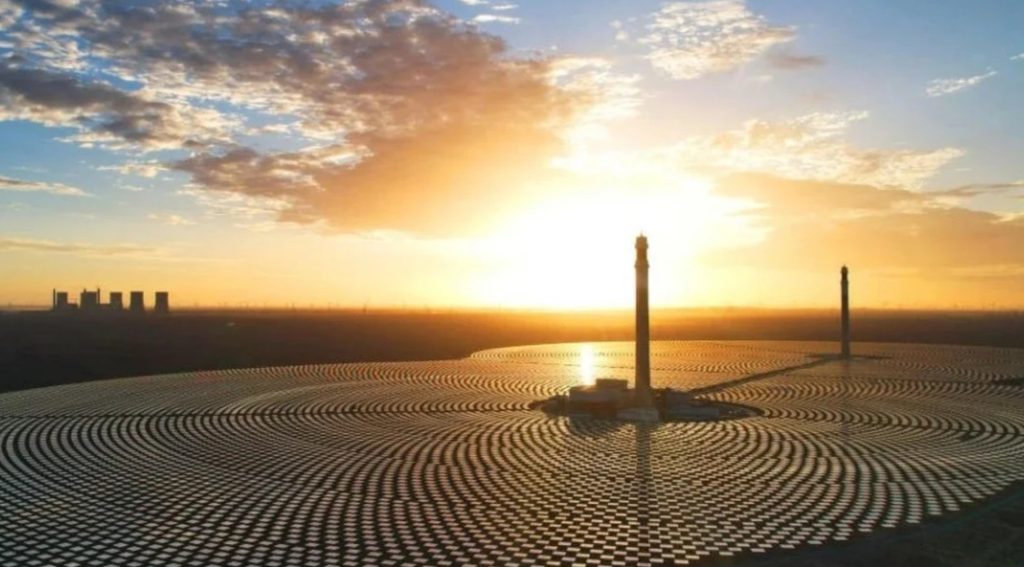China Three Gorges Corporation (CTG) has launched the world’s first dual-tower, single-generator solar thermal power plant in the Gobi Desert.
Located in Guazhou County, Gansu Province, in the vast northwestern Gobi Desert, the project is a pivotal part of China’s extensive clean-energy hub. This development is specifically designed to address the intermittency challenges of traditional solar photovoltaic (PV) and wind power, paving the way for scalable, continuous renewable electricity generation that can function around the clock.
The innovative dual-tower system:
The plant utilizes a concentrated solar power (CSP) design to maximize energy capture and storage efficiency. The facility features two towering structures, each approximately 200 meters (656 feet) tall and positioned about 1 km apart.
These towers are surrounded by nearly 27,000 to 30,000 mirrors (heliostats) that precisely focus intense sunlight onto receivers at the top of the towers. Crucially, the dual-tower setup is about 25% more effective than a single-tower design because it allows the east tower to capture the morning sun while the west tower takes over in the afternoon, ensuring optimal collection throughout the day. Furthermore, the partial overlap of the mirror fields reduces the total number of mirrors needed, resulting in significant cost savings.
Round-the-clock power generation:
The heat collected by the heliostats is transferred into molten salt, which acts as a thermal battery. The salt is heated to temperatures reaching up to 570 degrees Celsius (1,058 degrees Fahrenheit) and stored. This stored thermal energy is then used to generate steam that drives a single turbine system, allowing the plant to consistently generate power even after sunset or during cloudy weather. This characteristic provides stable, dispatchable power that can supply electricity to an estimated half a million households annually, making it a critical asset for grid stability.
Expert insight:
The new approach positions CSP as a crucial technology for a robust clean energy future. Wang Zhifeng, a senior researcher at the Chinese Academy of Sciences, highlighted the importance of this technology in the national energy strategy. Multiple media reports have quoted him saying that, “Nearly 60 per cent of the solar thermal plant’s cost comes from its mirror systems, which must be precisely curved, highly polished, and capable of tracking the sun with great accuracy.” Wang underscored that solar thermal power “can bridge the gaps” created by the intermittency of other renewable sources, demonstrating its value as a complementary, rather than rival, technology to PV and wind farms.













